I've written before about Cortland, N.Y. A more recent visit resulted in more photos to share.
First, some with 20th-century commercial interest:


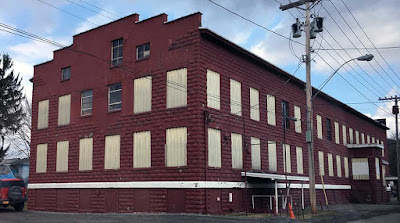
I liked this boarded up painted-block building even before I saw its cornerstone:
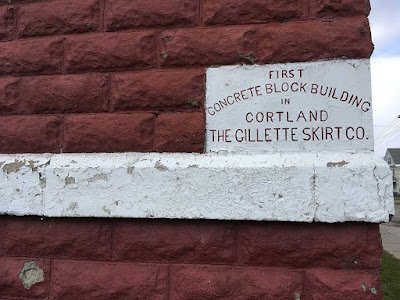
I wanted to rescue it and turn it into something... not sure what.
I stopped in at the county historical society, which was pretty interesting. This was maybe the coolest thing I saw:

The label says "The Single Handed manufactured by Wickwire & Garrison, Cortland, N.Y.," and the docent told me it's a vaccum cleaner. There is no information about this object on the interweb... searching Wickwire and Garrison gets you this photo of two buildings in downtown Cortland:

The one on the left is the Garrison block and the one on the right is the Wickwire block. Not sure if one of them housed the factory where these vacuum cleaners were made.
On the north edge of Cortland, you come to the Village of Homer. First you see this octagonal building:

I heard someone is about to renovate it for business use.

I'm glad it will be saved, but its current state of weathering is beautiful in its own way...

...including this hand-written sign on the door.
Just up the street is this place, which used to be the Gunroom, I guess:

At some point, someone rubbed out the G and made it into the Unroom:

It has that fake-brick asbestos siding I associate with rural poverty in upstate New York, and this great weathered partial billboard:
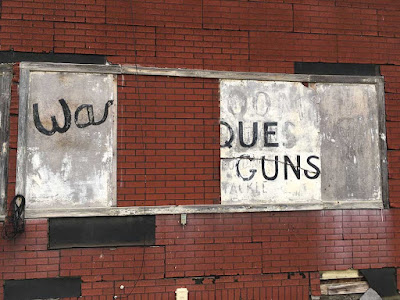
Homer itself is a quaint village with a two-block brick downtown business district that still houses a clothing store and village market, plus a restaurant/bar and a few attempts at chi-chi (an olive oil bar). It was clearly well-to-do in the 19th century, as shown in these engravings from an old atlas:
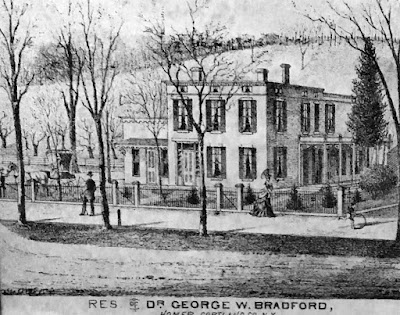


This last house (note the hitching posts along the street edge) was the residence of Jacob Schermerhorn and is still easy to spot today...

...though the fence is greatly simplified.

Here it is from the other side, showing the carriage portico.

And here are the hitching posts in front.
Another house memorialized as it looked some time in the 19th century is called the David Harum house:
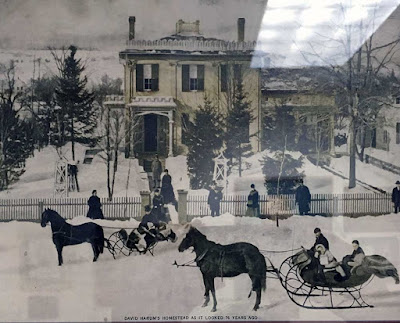
His actual name was David Hanum, and this is the house today:
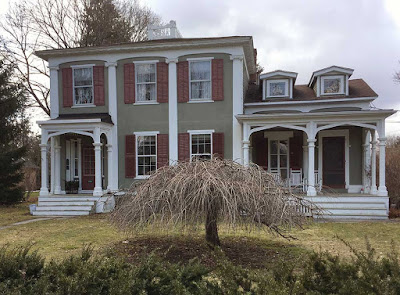
Love that weeping tree!
David Hanum was a local banker of some repute, and may have been the source for a fictional character called David Harum. He was the subject of an eponymous 1899 best-seller, which was the source of the expression "horse-trading." Homer seems to be a bit confused as to whether Hanum or Harum was the one who lived in their town.
Near these two houses along main street are a number of others that caught my attention:

This one was built in 1816. A close-up of the door:

This brick house was the 1832 birthplace of Andrew Dickson White, cofounder and first president of Cornell University (1866-1885):
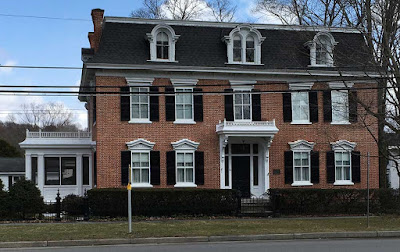
A close-up of the gate on the left side of the yard:

I'd like to sandblast that and see the detail under all that paint. Note the broken-off axe on the left side of the symmetrical design.
A few more houses just because they were cool:


There was another house I didn't get a photo of that had a history plaque in front, which read "William Osborn Stoddard, assistant personal secretary to President Lincoln. Born here 1835, died 1925." And remember, Homer had another illustrious resident I've written about before, Amelia Bloomer.
Friday, May 11, 2018
More of Cortland, and Meet Homer
Subscribe to:
Post Comments (Atom)


No comments:
Post a Comment